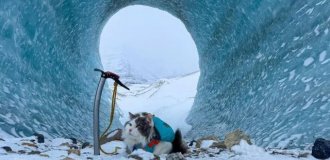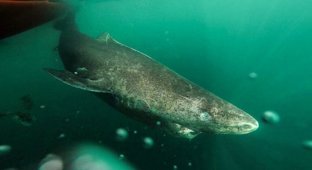Hammerhead shark: an unsolved, eerie ocean phenomenon (12 photos)
At times, far from the shore, where the ocean seems completely empty, these strange fish gather in gigantic schools. Hundreds of sharks move in a single stream, as if obeying an invisible signal. Scientists record their movements, take videos, count the individuals... but there's no answer. This mystery is called the "mass aggregation phenomenon," but no one knows why they do it. 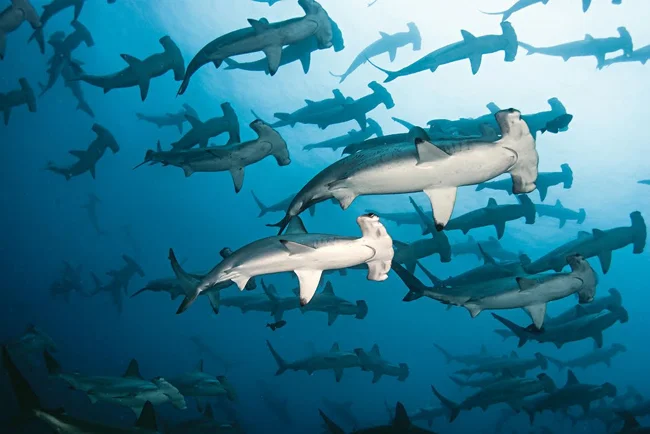
Autumn has arrived, and the sharks have flown south.
The hammerhead family includes nine species: the largest grow up to 6.2 meters and weigh almost a ton. Like a small bus! The smallest don't even reach a meter. But most importantly, the strange head shape remains unchanged! This is what makes the hammerhead the perfect predator. 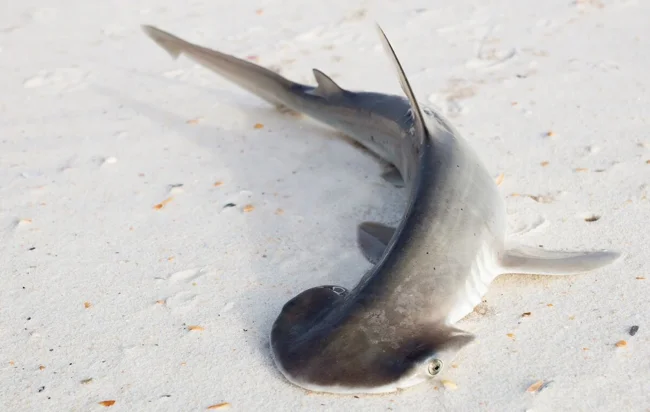
Among the hammerhead sharks, there's a species that has chosen to be a different tool. This is the shovelhead shark. Its head is narrower and curved like a crescent.
First, hammerheads have eyes on the edges of their snout. This positioning allows them to see 360° around them. No one swims past unnoticed—prey or another hunter. Plus, the eyes' field of view overlap: the fish sees in front of it with both eyes, creating a single image. And that's a really cool feature! 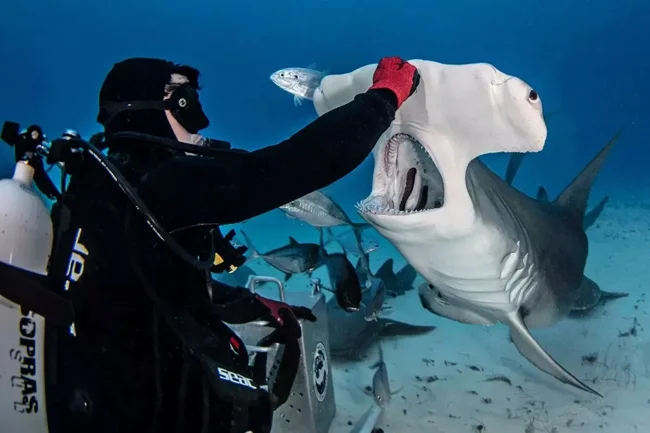
Despite its flat head, the shark's mouth is quite something!
This type of vision is called binocular. For us, it's normal. We see the world as a complete picture. But most marine creatures don't have this ability—their eyes are located on opposite sides of their bodies. This means their image is flat, almost 2D. Only some predators have slightly forward-facing eyepieces—this makes hunting easier. Sharks with a standard snout have a binocular field of view of only 10-15°. But hammerhead sharks have a full 50°! 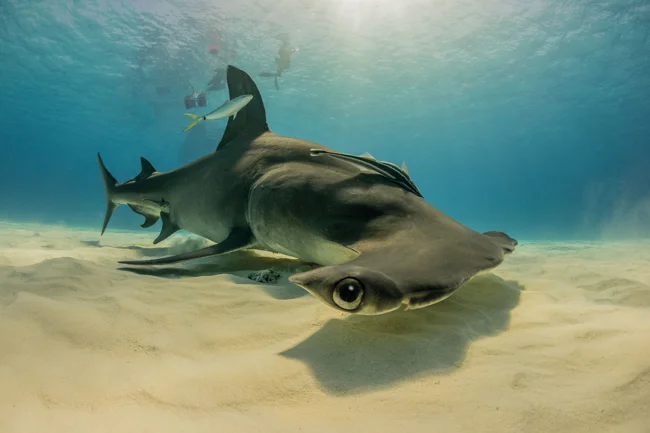
That same security guard at the grocery store.
Secondly, the nostrils are located next to the eyes. Why do fish need them? To process chemical signals in the water. The further apart the nostrils are, the larger the area they can scan. 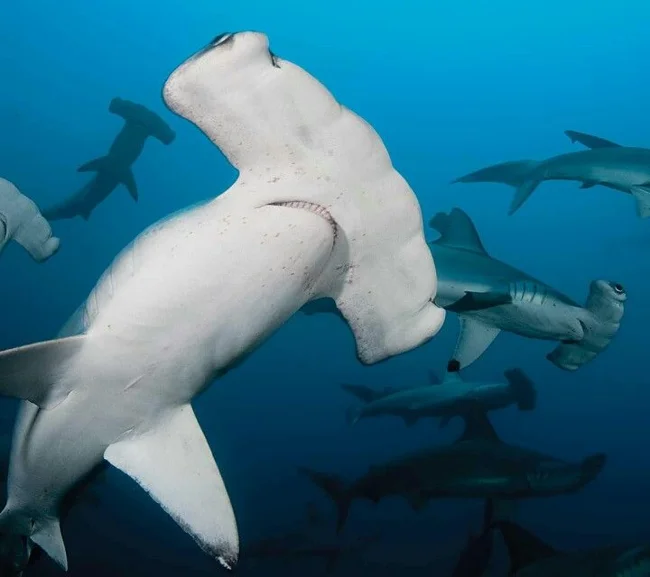
Hey, guys, can you also smell the best Animal Book subscriber on the other side of the screen?
Thirdly, the entire surface of the snout is covered with sensory cells called the ampullae of Lorenzini. They detect the electrical fields of living creatures. Thanks to these sensory cells, the shark swims like a navigator—it can find prey even under the sand. Yes, other shark species have these cells too, but it's like with nostrils: the wider the receptors are spaced, the more space they scan. 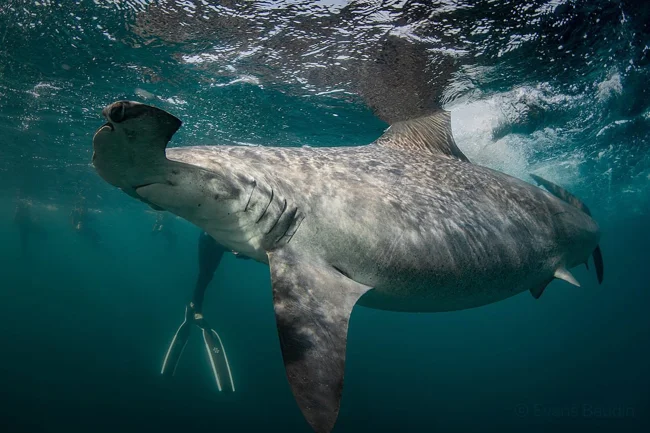
Despite their size, hammerhead sharks are considered a relatively harmless species. Divers regularly hand-feed them.
Of course, to process all this information from their sensory organs, these fish need a large brain. The hammerhead's brain is larger than that of most common sharks. Perhaps this is why these fish organize those mysterious gatherings we mentioned at the beginning. Mass aggregations can be found off the coasts of Mexico, Australia, the Galapagos, Cayman Islands, and Fiji. The gathering sites are usually the same, but there is no definitive systematic pattern to the sharks' behavior. In some areas, they gather once a month according to the lunar calendar, while in others, it's once every few months or even once a year. The duration of these gatherings also varies: from 30 minutes to several hours—even here, there's no consistent pattern. 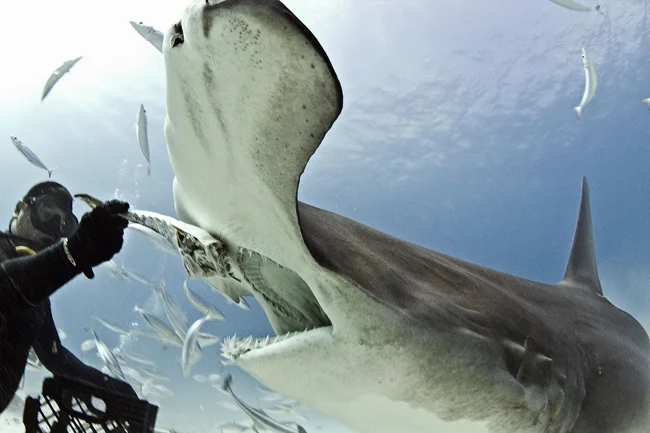
Fish for mom, fish for dad, right hand for grandma, left hand for grandpa.
Most often, these gatherings are held by bronze hammerhead sharks. Throughout the ocean, they gather in huge groups of up to several hundred individuals and swim in circles for some time. They are not related to each other or even the same age: both adult males and juveniles are found in shark pools. Scientists still haven't figured out this phenomenon of mass gatherings. Many hypotheses have been put forward, but none stand up to scrutiny. 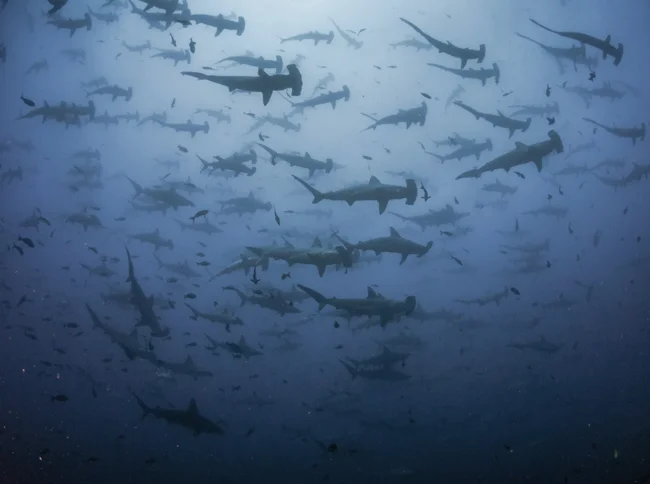
If your party isn't like this, don't invite me!
Migration? Unlikely. Hammerhead sharks live in the tropical Atlantic and Pacific Oceans. Depending on the season, they migrate south or north, like migratory birds. Some species, like the bronze shark, migrate nearly 6,000 kilometers. Other species migrate not far, but deep—almost 1,000 meters. But they don't gather in schools for this! Hammerhead sharks always travel alone. 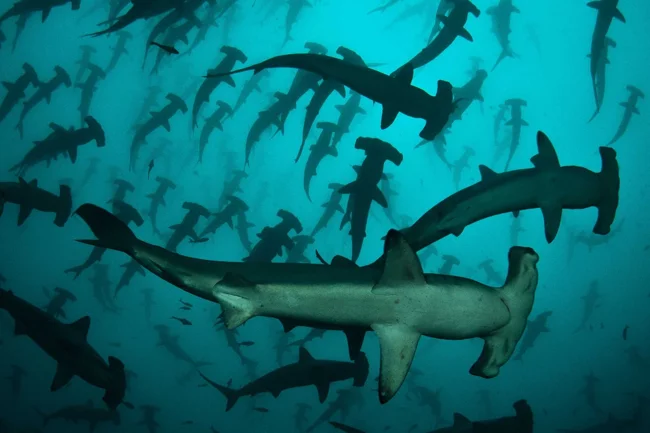
What it's like to get on the bus to work at 7 a.m.
Hunting? Definitely not. Some shark species circle their prey like a carousel, gathering it into a school. But look at the photos: other fish calmly swim past the giant school. That's because hammerheads' main food is bottom dwellers buried beneath the sediment. These predators find them using that same miracle head with its cluster of cells sensitive to electric fields. 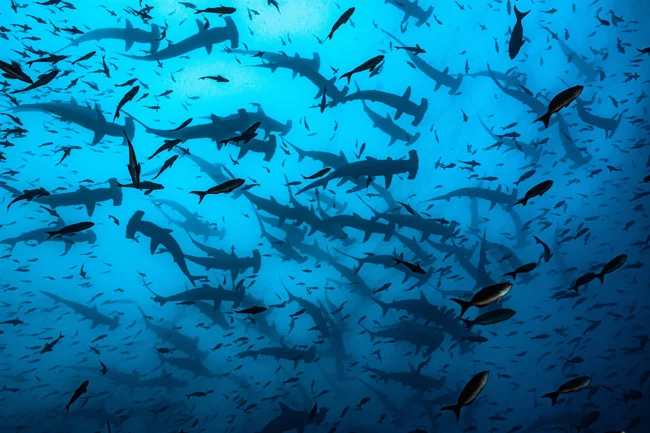
Several hundred sharks participate in shark turns at once!
Reproduction? Also out of the question. Some gatherings include fish of all ages, including immatures. In others, the company is made up of individuals of the same sex. This happens off the Rangiroa and Tikehau Atolls in French Polynesia. As the full moon approaches, dozens of predators gather around the islands! 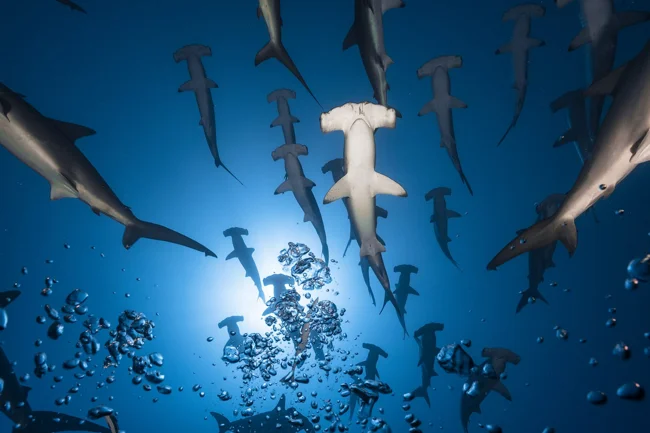
When your phone dies and you're trying to find your way without a GPS.
Mating season for hammerhead sharks occurs in the spring and summer. Males locate receptive females by electrical fields and scent, and then bite them. This mating ritual leaves numerous scars on the pectoral fins and sides. If the female is willing to produce babies, she doesn't resist the bites, and mating occurs. Pregnancy in hammerhead sharks lasts almost a year. During this long period, the babies have time to fully develop. Independent pups are born. And not just one or two—a heroic mother can give birth to up to 50 babies! True, after birth, her duties are complete: the young fend for themselves and learn to survive as best they can. 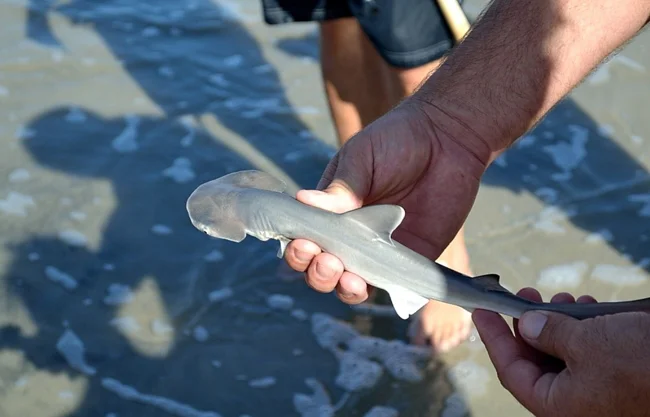
What kind of hammer is this? It's just a hammer for now!
Perhaps it's at these gatherings that sharks share experiences or discuss hunting and survival techniques? In that case, why do these gatherings occur at different times? And how can swimming in circles help learn anything? So many questions and hypotheses, but so few answers!

